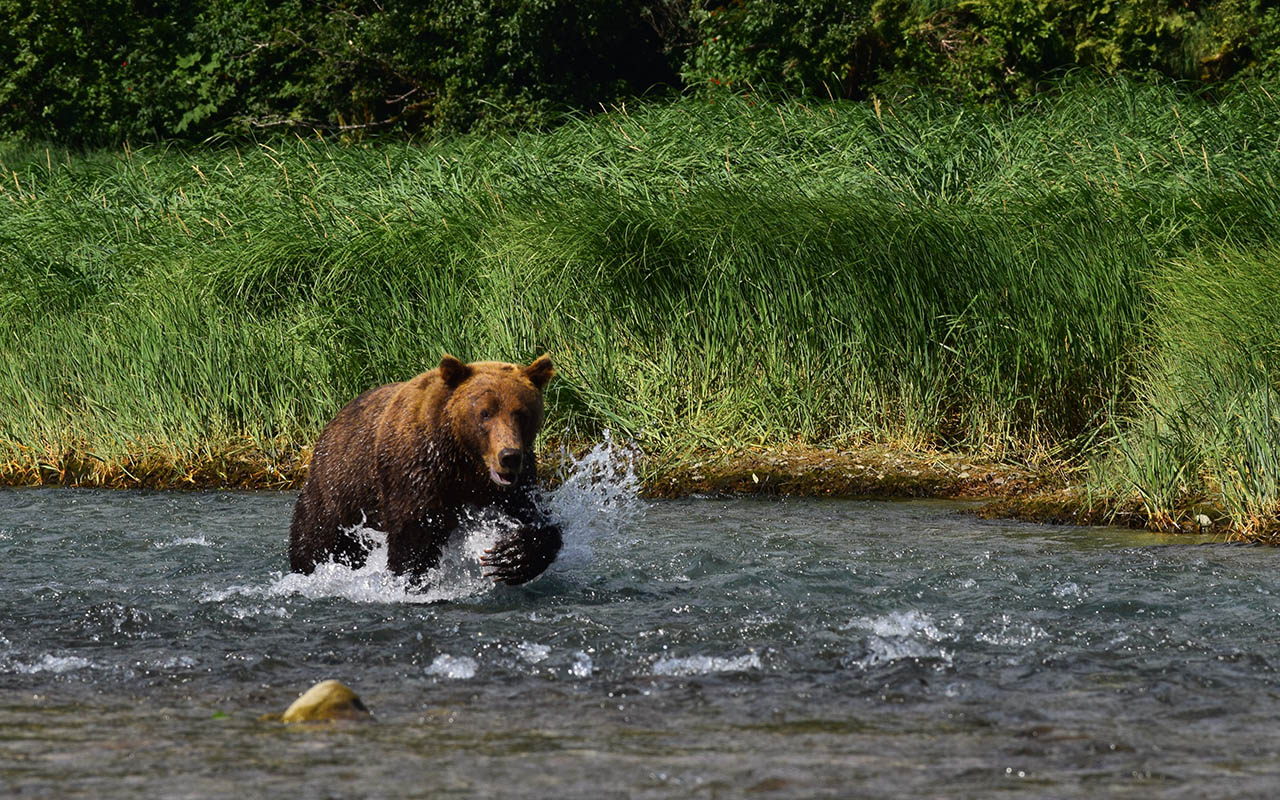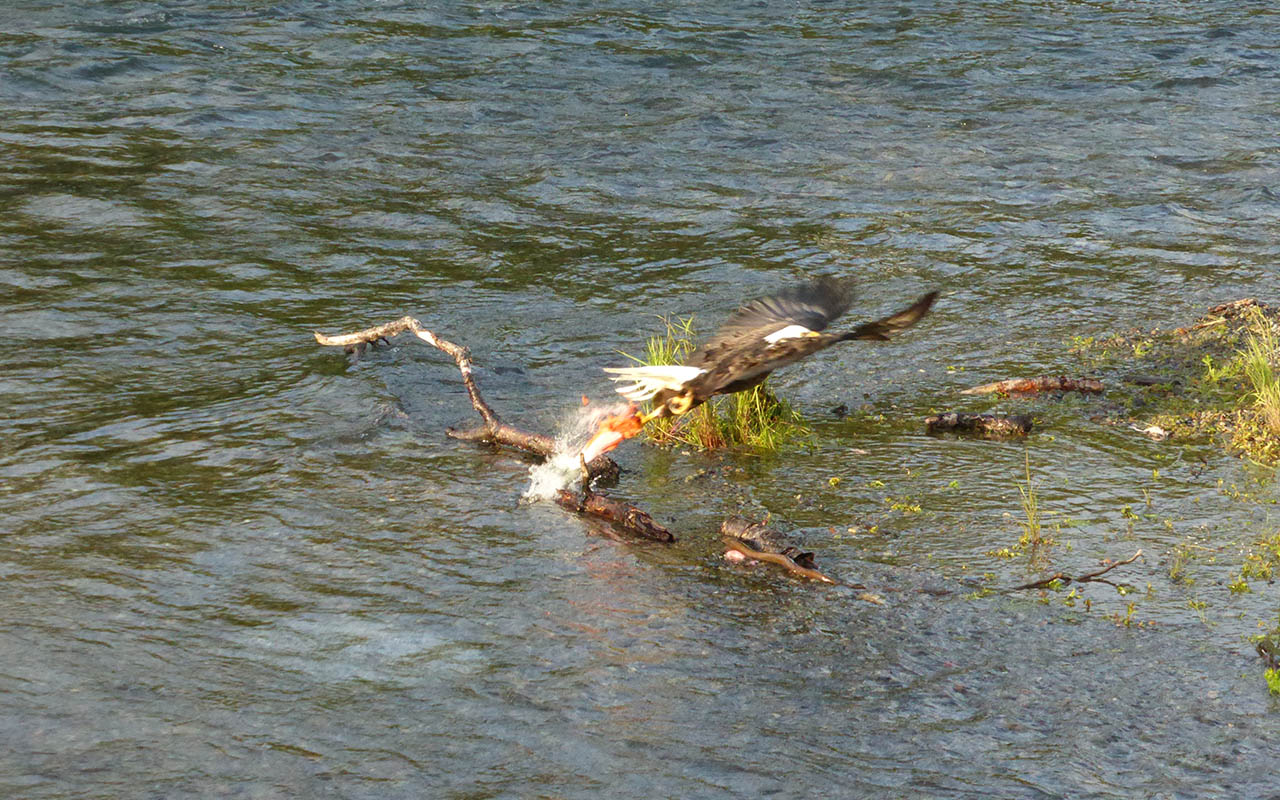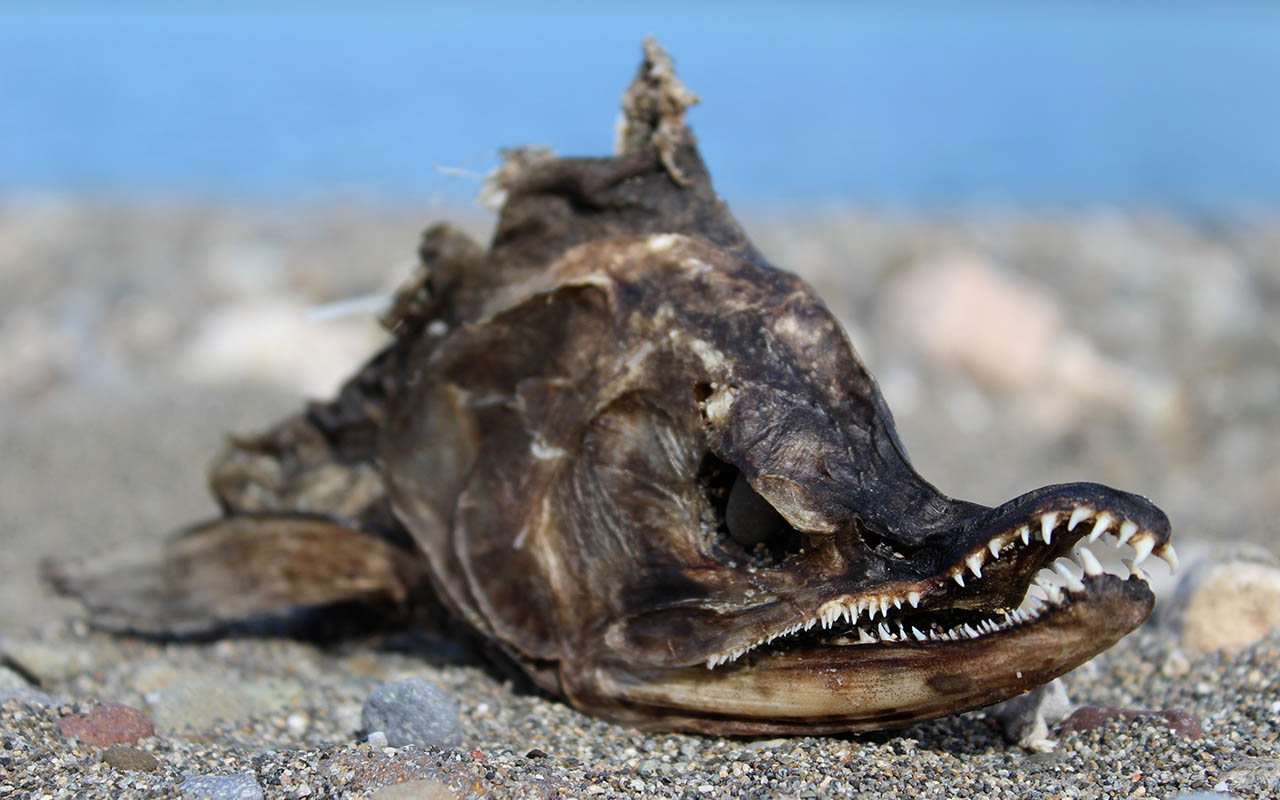The end of the salmon lifecycle provides life for so many animals along the coast. The first taste for a fledging bald eagle might be that of a salmon. The carcass of a salmon may be shared with a den of foxes hidden underneath an alder’s roots. Without salmon the coast would be vastly different, and it is thanks to several types of salmon that Katmai’s coastal wildlife have this opportunity to feast.
The brown bears of Katmai’s coast crave salmon like the brown bears of Brooks Camp. NPS Photo/M. Cohn
Following the North Pacific Gyre, salmon travel thousands of miles in their lifetime. Where they begin their lives is also where it ends; salmon return to their natal streams, the stream where they started out as an egg, to complete the cycle. Whales, sea birds, fishermen, and more follow the salmon. Three different types of salmon find the end of their journey at Amalik Bay and they come in waves. The first of the salmon that reach here are chum salmon, followed by pink salmon, and then silver salmon. Starting in late July we see schools of salmon waiting to make the transition from the ocean to fresh water at Geographic Creek. Salmon are anadromous creatures, meaning they start their lives in freshwater, but transition to saltwater as adults; they return to freshwater at the end of their lives to breed.
As numerous salmon make their way to their spawning ground, they have bald eagles soaring down with their talons spread, plucking them from the water. They have harbor seals flanking from the sides, picking individuals off with their quick reflexes. When they finally reach shallower waters they have bears waiting to fish them out of the river.
Even America’s symbol, the Bald Eagle, enjoys feeding on the salmon along Katmai’s coast. NPS Photo
At the mouth of Geographic Creek, the Amalik Rangers have stumbled into a scene of ten bears, one wolf, two foxes, seventy glaucous winged gulls, fifty blacklegged kittiwakes, four ravens, two belted kingfishers, six magpies, eight harlequin ducks, one harbor seal and three bald eagles. They have all come here for the migration of the salmon. This is a typical day for the animals here at Geographic Harbor from late July to mid-September. As the bears, seals, bald eagles and wolf begin catching the salmon, they take the fish to a safe area where they are free to feed alone. Bears are frequently observed eating the brains, roe and skin of the fish first – these parts are highest in fat. Depending on how much these predators have eaten they may continue to eat the fish, or leave what is left and continue fishing. At this time, other animals will scavenge on what is left of the fish.
Not exactly the face you want to show your mom. This dead salmon will eventually decompose and return its nutrients back to the circle of life. NPS Photo
For those salmon fortunate enough to reach their spawning grounds, there is still a lot of work to do. Females will dig nests, called redds, in the gravel. She will then lay her eggs in the nest, closely followed by a male to fertilize the eggs. The female will cover the redd with gravel and protect it until the end. The dying process is slow. Skin on the salmon seems to peel off, and sometimes multiple bones are distinctive where a dorsal and tailfin use to be. As the salmon loses the strength and energy needed to stay in the stream, they will get pushed back downstream by the current towards the bay. At the mouth of Geographic Creek, animals converge again for a second chance at these salmon.
All species play their own important part in the cycle of life at Katmai. Just like at Brooks Camp, the salmon of Katmai’s coast are a fundamental role. They bring life, energy, and nutrients to Geographic Harbor all the while completing their own cycle.



